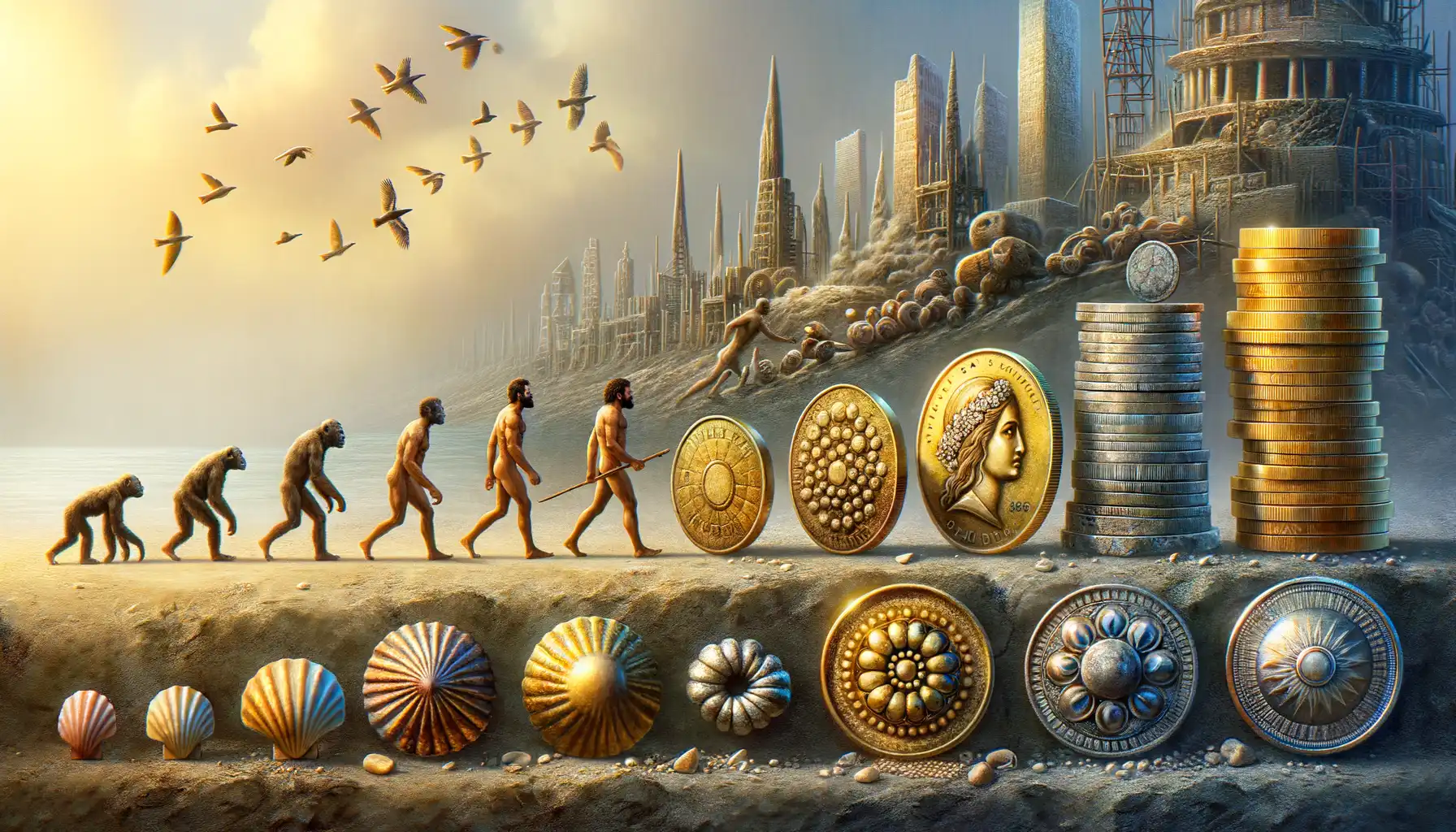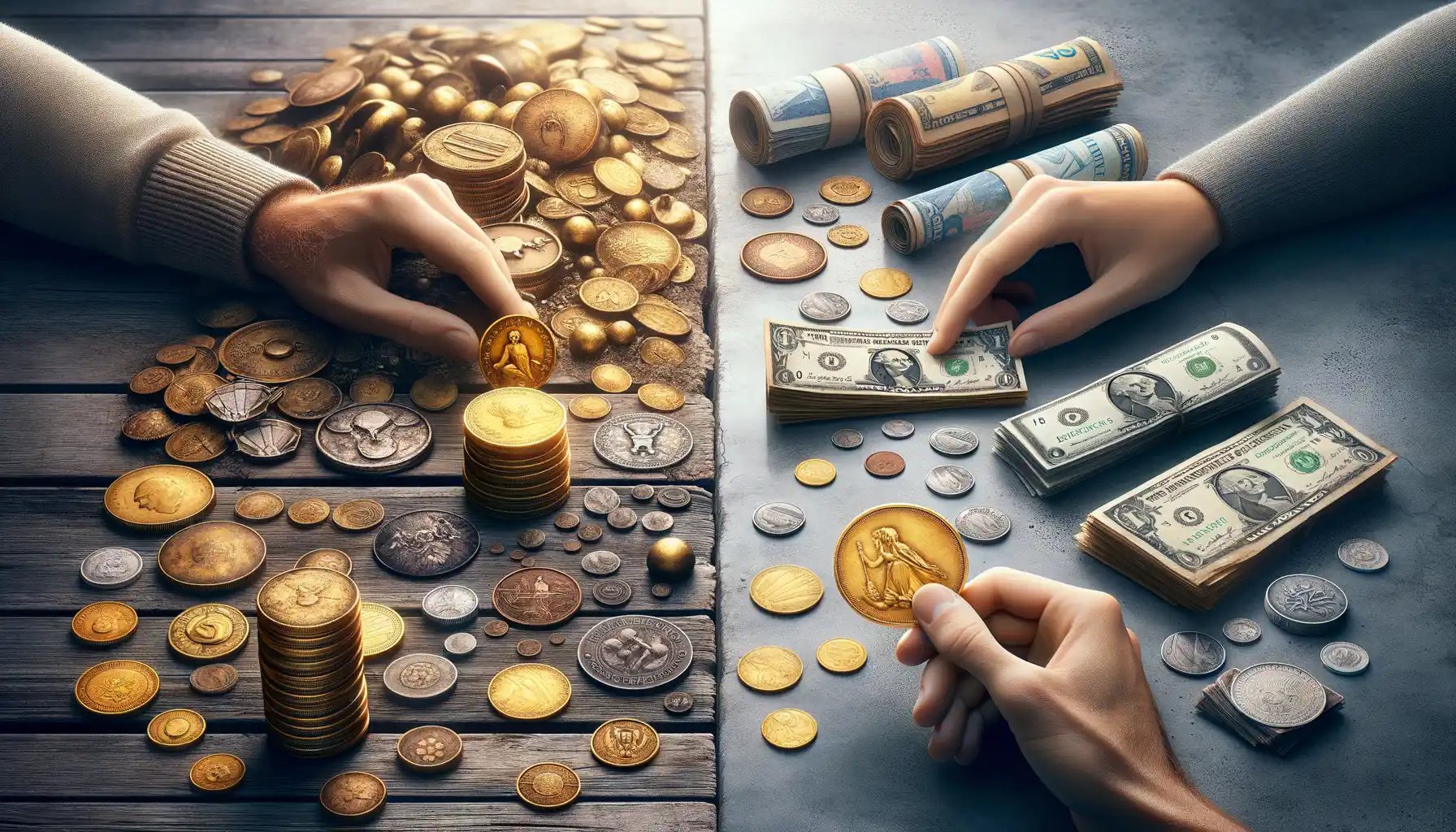The Origins of Currency and Early Barter Systems
How It All Began: Trading Without Money
Picture this: a bustling village marketplace thousands of years ago. No coins jangling, no crisp bills exchanging hands. Instead, people swapped goods—their own treasures for someone else’s. This was the barter system, humanity’s earliest attempt at “currency.” Need a sack of grain? Trade a clay pot. Eyeing that woolly sheep? Offer a handful of fish. Simple, right? Well, not always.
The trouble with bartering? Finding someone who actually *wants* what you’re offering. Let’s say you’ve got a gorgeous spear but desperately need fresh bread. What if the baker has too many spears already? Enter the problem economists call the “double coincidence of wants.” It’s a fancy way of saying, “Good luck finding someone who needs your stuff exactly when you need theirs!”
The First Sparks of Currency
As societies grew, so did their trade headaches. People began searching for universal items everyone agreed had value. Enter the first “proto-currencies.” Think:
- Shells (cowries were the Bitcoin of ancient Africa and Asia!)
- Livestock like cows, goats, or even camels—literal moving banks
- Salt, often nicknamed “white gold,” because armies marched to secure it
These weren’t just practical; they were symbolic. Cows didn’t just feed you—they screamed wealth and status. Shells weren’t just shiny—they made you part of something larger, a shared belief in value. And that belief? That’s the magic thread tying barter to today’s tech-heavy monetary systems.
The Rise of Coinage and Metal Currencies

The Spark That Changed Trade Forever
Imagine the clang of metal, forged into small, shiny discs—these were more than objects; they were promises. Around 600 BCE in ancient Lydia (modern-day Turkey), the first true coins were minted. Made of a naturally occurring mix of gold and silver called electrum, these coins were stamped with symbols, an early guarantee of authenticity. Each piece told a story: who issued it, how valuable it was, and why you could trust it. It was revolutionary, replacing the unwieldy barter systems with something far simpler yet incredibly powerful.
Coins didn’t just simplify trade; they reshaped societies. Suddenly, we had a universal language of value. A farmer in Greece could sell olive oil for coins, then use that to buy a finely made tunic from a merchant in Egypt. No awkward trade-offs or approximate deals—just an exchange rooted in trust and fairness.
- Gold and silver coins became status symbols, treasured by rulers to show power.
- They traveled the Silk Road, connecting East and West as conduits of culture and commerce.
- Some were even deliberately chipped, sparking debates about “cheating” long before modern counterfeiting!
The rise of metallic currency wasn’t just practical—it was mesmerizing. These coins, gleaming in the sun, carried weight beyond their metal; they carried the very promise of progress.
The Transition to Paper Money

From Metal Clinking to Paper Rustling: A Bold Leap
Imagine this: for centuries, people relied on the comforting weight of coins jingling in their pockets. Then suddenly, a new contender appeared—light as air, fragile as a dried leaf, yet transformative beyond belief. The shift to paper money was nothing short of revolutionary. What could paper offer that sturdy, glittering metals couldn’t? Convenience, trust, and a whole new way to exchange value.
The first instances popped up in ancient China during the Tang Dynasty, where merchants grew tired of lugging around heavy bundles of coins. Ingeniously, they began using “promissory notes” instead—a lightweight stand-in for all that copper and silver. By the time of the Song Dynasty, these notes evolved into the world’s first real banknotes. They were backed by the government, lending a sense of authority to what might otherwise seem like flimsy scraps of paper.
- It freed traders from cumbersome coin loads.
- It sparked innovations like centralized banks and credit systems.
- It made long-distance trade safer and faster.
Yet, not everyone embraced the change. Early Europeans scoffed at the idea until Sweden’s Stockholms Banco proved its potential in the 17th century. The success couldn’t be ignored—soon paper bills swept across the globe like wildfire, reshaping economies, power structures, and the very nature of wealth.
The Emergence of Digital Currencies

From Lines of Code to Modern Gold
Let’s rewind to the late 2000s: a mysterious figure (or group) called Satoshi Nakamoto introduced something that would shatter financial norms. The word “Bitcoin” entered our vocabulary, but it wasn’t just a currency—it was an idea. Imagine money, not as coins or paper, but as pieces of digital code, housed in a decentralized network. No banks, no middlemen, just transparent transactions powered by math and trust. Revolutionary, right?
Digital currencies took their first breaths as rebels—widely misunderstood and dismissed. But soon, they began rewriting the rules of global finance. Why? Because they solved problems we didn’t even realize we had. Consider this:
- Sending money across the globe became instant.
- Middlemen who gobbled up fees? Gone.
- Your assets, fully under your control—no more bank freezing accounts.
The Explosion Beyond Bitcoin
Fast forward to today, and the world of digital currencies isn’t only about Bitcoin. Enter Ethereum, with its “smart contracts,” opening doors to decentralized apps. Or stablecoins like Tether, bridging crypto and traditional finance. Suddenly, it’s not just tech-savvy experts diving into these waters—it’s everyday folks, corporations, and even governments. Digital wallets are the new leather billfolds; blockchain ledgers are the modern-day safes.
This is more than an evolution. It’s a paradigm shift. Digital currencies aren’t just emerging—they’re roaring onto the stage. And let’s be honest: can you feel the ground beneath your financial feet shifting?
The Future Trends of Global Monetary Systems

A World of Innovation: Where Money is Heading Next
Picture this: a world where your local café accepts cryptocurrency for coffee, but also lets you pay with biometric scans or even digital tokens earned from community contributions. Sounds like science fiction? Think again. The global monetary system is in the thick of a revolution, and it’s nothing short of breathtaking.
One of the biggest players shaping the future is the rise of Central Bank Digital Currencies (CBDCs). Governments are crafting their own digital money—imagine stable, government-backed cryptocurrencies that combine the trust of traditional banking with the frictionless speed of blockchain technology. China’s digital yuan is already making waves, while Europe and the U.S. aren’t far behind.
But wait—there’s more. The role of physical cash is shrinking rapidly. Why carry a wallet stuffed with bills when your smartphone can do the job? And speaking of phones, mobile payment platforms like Apple Pay and WeChat Pay are disrupting borders, letting us send money across continents with just a tap.
- Programmable money: Digital funds linked to smart contracts that execute specific actions automatically.
- Decentralized finance (DeFi): Peer-to-peer transactions bypassing banks altogether.
Fascinated? Keep watching closely. The future of money isn’t just about what we’ll use to pay—it’s about empowerment, inclusivity, and a new era of financial freedom.
